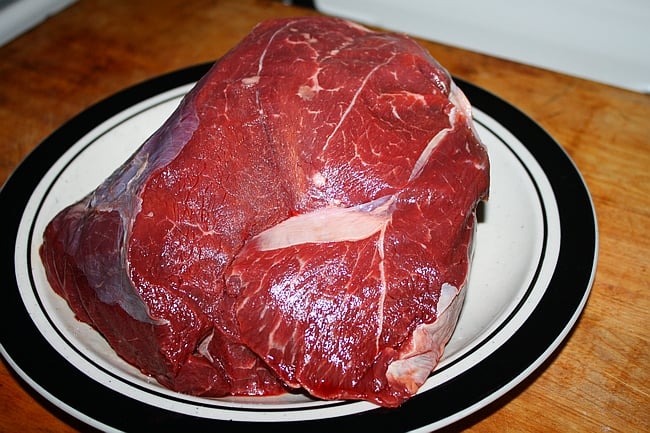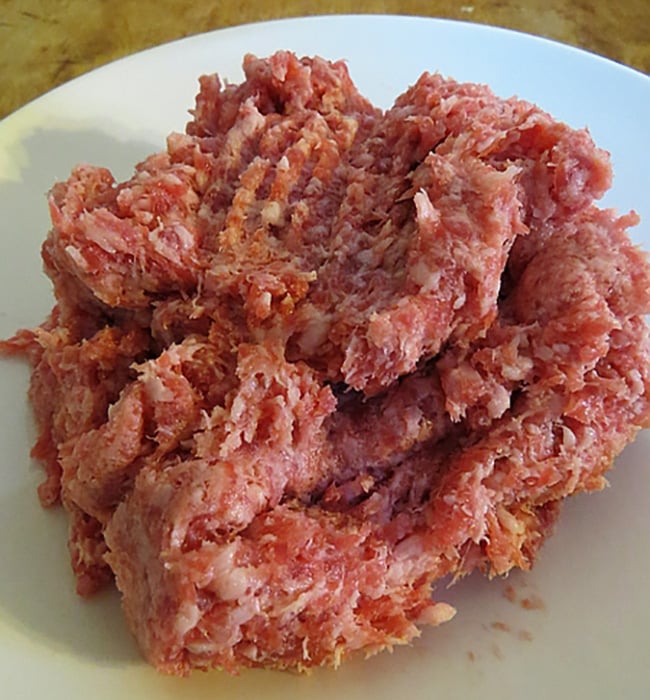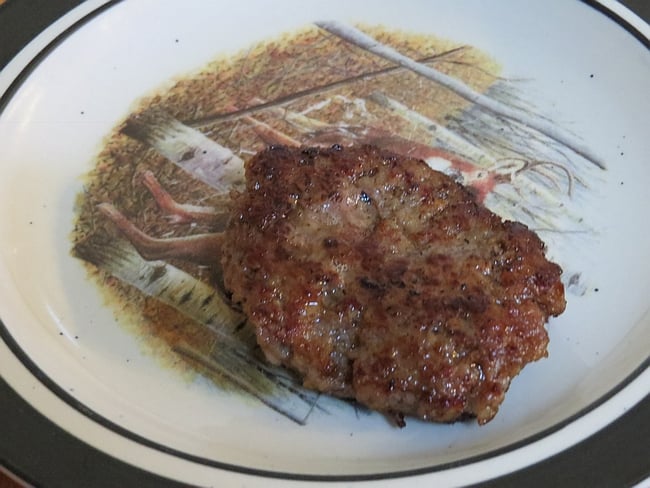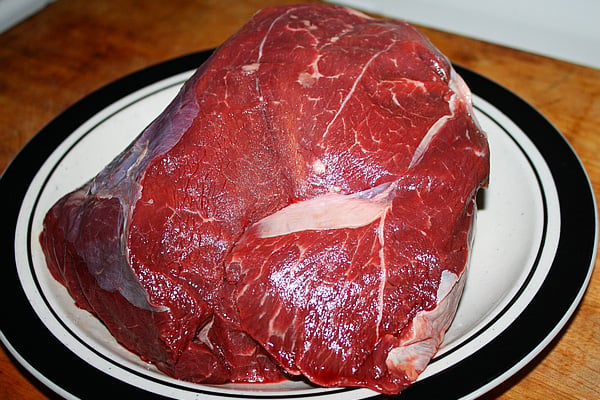Last Updated on
After hours, maybe days or months or years of hunting, there it is – the wild game animal you’ve been waiting for. You wait as long as it takes to make the best shot. A little while later you start preparing your food for the table.
It’s Too Gamey
One of the most common complaints about wild game is “it’s too gamey.” The best way to ensure quality meat starts with the clean kill. Life happens and sometimes shots don’t connect the way you planned. I waited a very long 18 minutes to leave the stand and start tracking my deer. If I’d been a little less certain about my shot, I’d have waited longer. Don’t push your animal. Give it time to lie down and die. You’ll avoid and additional adrenaline and testosterone rush that contribute to gamey meat.
Field dress and cool the meat as soon as possible. My early September bear needed to be packed with ice but my late November buck was warm on our cold bare hands. Plan ahead. If you’re not close to the tagging station, butcher, or home, you’ll do well to have fast access to ice. My sister Melissa packed her cooler with ice during the moose hunt and put the ice to good use on the second day of a warm October hunt.

Remove all hair from the meat while butchering. A few stray hairs can taint the meat’s flavor it’s sitting on. Remove excess fat. Fat retains a lot of flavor and spreads during cooking. Rinse the body cavity well, especially when the shot wasn’t clean, to remove entrails and as much blood as possible.
When possible, and of course if it’s appropriate for the species you’re hunting, let the carcass hang in a cooler. There are exceptions. Bear is usually treated like pork – butchered quickly and frozen as soon as possible.
People who aren’t accustomed to the taste of wild game will probably find the meat stronger flavored than they’re used to. Wild game is closer to 100% pastured meats than today’s grocery store meats. Try marinades and give them time to work. If I’m going to cook meat from a big bull moose, I thaw the meat in the refrigerator overnight and mix the marinade in the morning. Let the meat and marinade sit in a glass bowl or zippered bag all day. Turn each time you open the refrigerator. I don’t marinade more than 24 hours. Two to three hours is usually enough to cover the strongest flavors.
Most everyone likes teriyaki marinade. It’s a good flavor to start with for people who are new to wild game:
Teriyaki Marinade
Mix:
- 8 oz crushed pineapple
- 1/3 C sugar
- 1 t molasses
- 2 cloves garlic, minced
- ¼ C low sodium soy sauce
Blend all ingredients.
Teriyaki works well for traditional strips of meat, steaks and roasts. Strips need no more than an hour, steaks two hours, and a roast is ready to go in 12 hours. Pineapple juice is a natural tenderizer so be careful to not overdo the time; you don’t want mushy meat.
Wild game is lean. Adding fat will add flavor and lessen the strong (gamey) flavor. Adding up to 20% pork or beef fat to sausage and burger will improve flavor and help the meat brown as it cooks. Moose, deer and caribou with bacon ground in make fantastic burgers and meatloaf. Layering bacon on top of meatloaf provides a self-basting loaf.

It’s Too Tough
“It’s too tough.” It’s a common complaint about wild game. Wild animals are on the move, using their muscles to browse and graze unlike farmed animals that have their food delivered to them. Wild meat does have more texture but it doesn’t have to be tough.
Allow meat to warm to room temperature before cooking. Twenty minutes on the counter isn’t enough time for the meat to start spoiling.
Start in the field. Are you hunting for a trophy or for meat only? If you’re hunting for meat, you’ll want a younger animal. If you’re looking for a trophy as well as a freezer full of meat, and aren’t most of us at least a time or two, you’re going to shoot the larger, older animal with bigger antlers. You can still enjoy the meat as much as you would have a younger animal, you’ll just have to handle it in different ways.
Whether too tough or too gamey – never over-cook wild game. Some meats such as feral hog, bear, bobcat and cougar, fox and wolf can be contaminated with trichinosis. What do they have in common? They are predators – meat eaters. If you’re cooking a meat eater, cook the meat to an internal temperature of 170 degrees. Freezing, smoking and salting doesn’t kill trichinosis in wild game. Remove these meats from the heat source when they reach 160-165 degrees and allow the residual heat to finish cooking.
Use tenderizers. Balsamic vinegar, pineapple and tomato juice taste good and tenderize. A jar of tomato sauce or stewed tomatoes will tenderize stew meat while adding a lot of flavor to the soup or stew.
Herbivores don’t need to be cooked to an internal temperature of more than 130 degrees. Rare to medium rare is safe, moist and tasty. Lean meats dry quickly. For steaks, chops and other thin cuts you’ll cook on a grill or in a fry pan, cook over high heat. Remove from heat at 115 to 125 degrees and allow the cuts to rest. They’ll finish cooking from residual heat.
Cook larger cuts of meat with moist heat. Set the oven no higher than 350 degrees. A roast slow cooked in a Dutch oven with two cups of beef broth, two quartered onions, potatoes and carrots will retain its juices and mix its flavors.
Dry rub the roast with olive oil or bacon fat and season. Any seasoning you use on beef may be used for venison and bear. Remove the roast and vegetables from the Dutch oven, setting aside to let the roast rest. Use the broth for gravy. Keep track of the internal temperature. A thermometer you can leave in the roast and read from the counter is very helpful for this dish. You won’t have to open the main and Dutch ovens to check the temperature.
Additional Tips
Lean meats don’t brown up as nicely as our farm fattened animals. Choose a seasoning that contains sugar or add a teaspoon of sugar to your seasoning. Give the sugar a little time to dissolve before cooking chops and steaks on the grill or fry pan or under the broiler. Your cuts will brown up well on high heat now.
Know your cuts and use the right one for the dish you’re preparing:
Neck, flank and shank: mince, stew, sausage and burger.
Shoulder: pot roast.
Ribs: oven roast and chops.
Loin: oven roast and steaks.
Rump: stew meat and rump roast
Round: pot roast and Swiss steak. I don’t know many people who ask for Swiss steaks and I think they’re making a mistake. If you haven’t had Swiss steaks I urge you to give it a try. Its rich flavor will convince you to give up a pot roast in exchange for the steak.
I’m told the ribs from an early/archery season deer are fantastic but once the deer starts to put on winter fat the quality declines. I’m hoping to find this out for myself this year.
Breakfast Sausage
- 5 pounds ground meat, fat added at grind
- 1 T Italian seasoning, adjust to personal taste
- 2 T Kosher salt
- 2 T black pepper
- 2 T garlic powder
- 3 T sage
- 1 C maple syrup (not pancake syrup) OR maple sugar to taste (I start with 1/4 cup).
Cook a small amount of meat to check the flavor. Add more seasoning to suit your taste, let it sit a few hours and check the flavor again. Form into patties and freeze individually on cookie sheets before packaging.

The Nana’s Mincemeat Recipe
My mincemeat recipe is easy to make. It was passed down from Great Nana Tress to Nana Grace to Mum to me. You don’t need a set amount of meat. We always use the neck. Everything in this recipe is measured with a bowl or tablespoon. Pick a bowl and stick with it. The number of bowls you’ll use varies but never the size of the bowl. One quart jar of mincemeat makes one pie.
- 3 bowls of cooked neck meat, shredded
- ½ bowl cider vinegar
- 1 bowl suet from this year’s beef critter
- 1 bowl golden raisins
- 1 bowl dark raisins
- 5 bowls of apples
- 1 bowl of molasses
- 2 bowls of sugar
- 2 Tablespoons each nutmeg, cinnamon, ground cloves.
Combine all ingredients and cook over medium heat until the suet has melted and has mixed in well. Ladle into quart jars and pressure can for safety. Don’t hold back on the suet. It’s tempting because after all, it’s suet. Resist that temptation.
Cooking With Bear
Bear meat has a bad reputation. Around here we grew up knowing bears stink and so does their meat. When I was growing up the bears went to the dump to find easy meals. Yes they stunk – like the dump. A gut shot bear also smells terrible and you’ll lose some of the meat if that happens but the untainted meat is wonderful. Friends often can’t tell the difference between bear and pastured beef. Keep an open mind. I’ve never had anyone refuse to try bear meat in a cooking wild game workshop. The skeptics are always surprised. So far, so good. Nobody has disliked it. They haven’t all loved it but that’s typical of all meat.
Immediately field dress the bear. Trim as much fat as possible wild field dressing and more before freezing. Before cooking, trim any fat you missed and remove the silver skin. You’ve now got a piece of meat fit for royalty.
Season bear like beef but cook it like pork.
Bear Chili
- ¼ cup olive oil
- 1 large sized onion, diced into small pieces
- 3-4 large cloves of fresh garlic, minced
- 2 pounds of ground bear
- 2 pounds of beans, red, black or yellow eye
- 2 T chili powder
- 4 tsp cumin (don’t skip this)
- 4 C tomato puree
- 2 C stewed tomatoes
- ¾ cup red wine
In a Dutch oven that doesn’t have legs, sauté the onion and bear meat in olive oil for five minutes. Add garlic and sauté three more minutes. Deglaze the oven with the wine, scraping the bottom and sides to remove all bits. Add the stewed tomatoes, tomato puree, beans, chili and cumin and mix well. Simmer for an hour.
Check out other articles on cooking:











